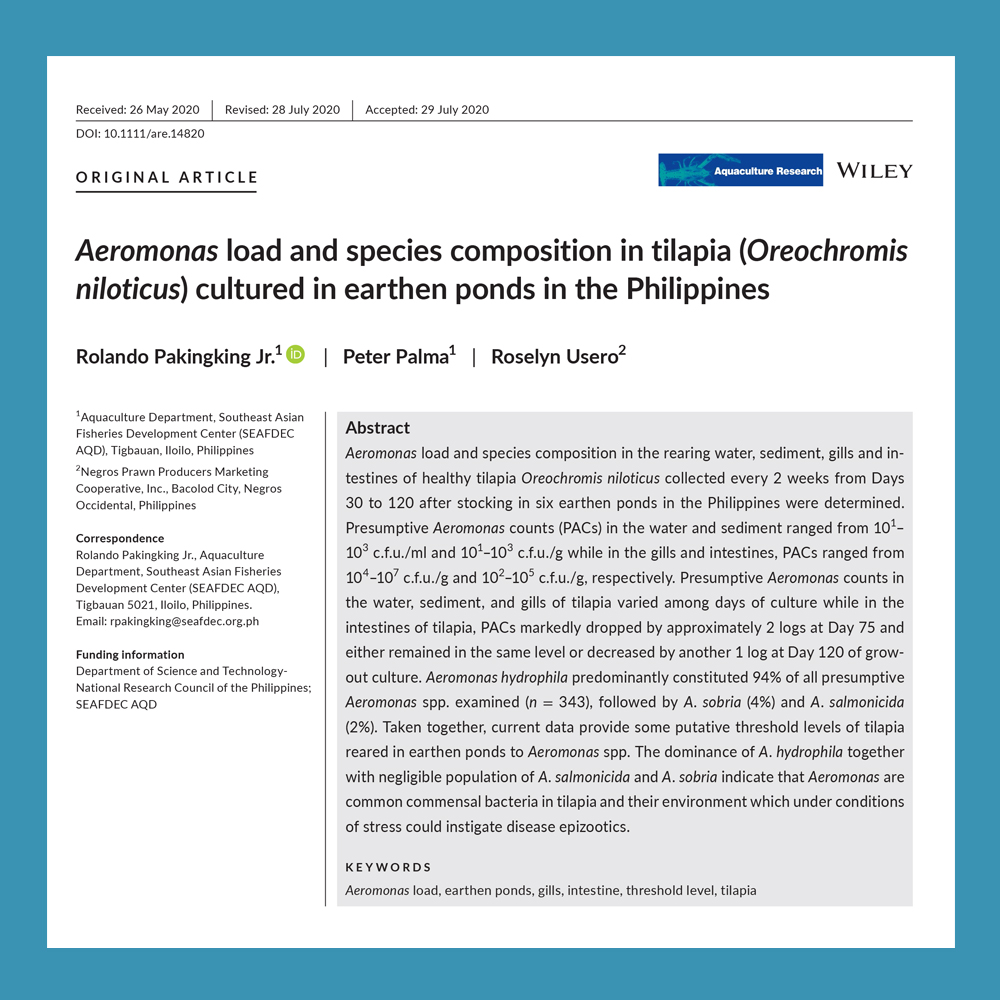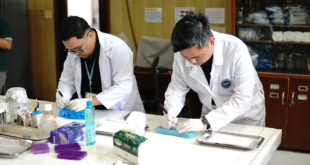How much disease-causing bacteria can tilapia tolerate? A recently published study provides a glimpse, at least for Aeromonas, a type of waterborne bacteria.
Aeromonas causes diseases in fish, crustaceans, mammals, and even humans. While they are naturally present in the environment and even in the body of healthy tilapia, they pose a health risk at sufficient numbers, especially when the water quality deteriorates, and the immune system of fish are impaired.
Symptoms of Aeromonas infections in fish include dropsy (swelling), necrosis, red sores, open wounds, and “pop-eye”.
Dr. Rolando Pakingking, a scientist at SEAFDEC/AQD, stocked tilapia in earthen ponds in the Philippines and examined their gills and intestines for Aeromonas. He monitored the fish organs, as well as the water and pond sediments, every two weeks from day 30 to day 120.
All things factored in, tilapia appeared to tolerate an Aeromonas load of 103 cfu/ml both in the water and pond sediment. The tilapia, all of which remained apparently healthy, likewise tolerated 105 cfu/g of Aeromonas in their gut and as much as 107 cfu/g in their gills without a hitch. About 92 percent of the Aeromonas in the study were identified to be A. hydrophila.
The article “Aeromonas load and species composition in tilapia (Oreochromis niloticus) cultured in earthen ponds in the Philippines” by Dr. Pakingking and his co-authors, including SEAFDEC/AQD Researcher Peter Palma, was published in the journal Aquaculture Research on 14 August 2020 and may be requested at https://repository.seafdec.org.ph/handle/10862/5970.
Funding was provided in part by the Department of Science and Technology – National Research Council of the Philippines. / RD Dianala
 SEAFDEC/AQD Southeast Asian Fisheries Development Center | Aquaculture Department
SEAFDEC/AQD Southeast Asian Fisheries Development Center | Aquaculture Department




